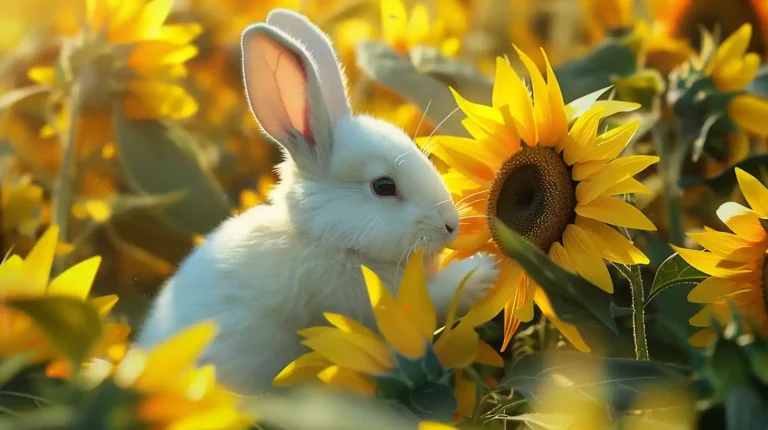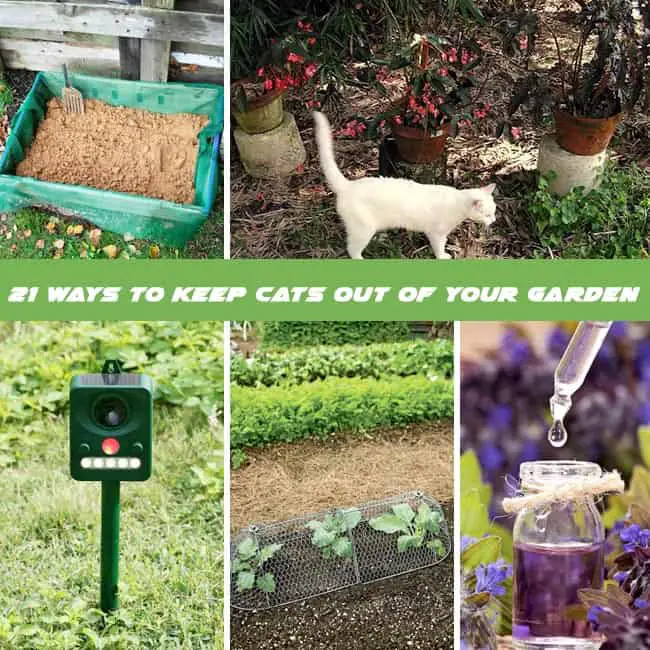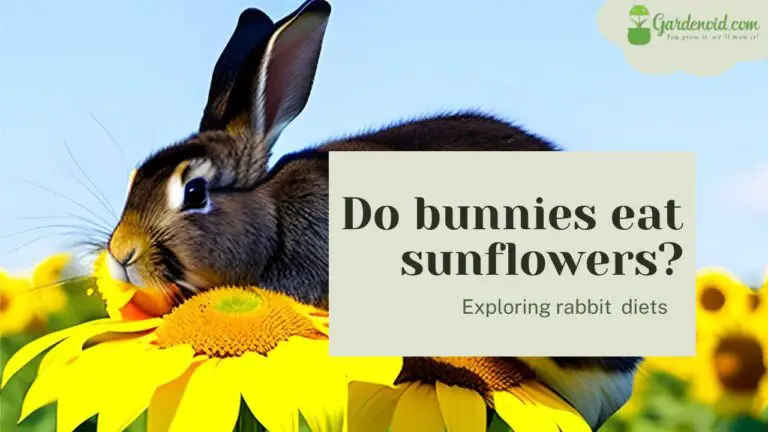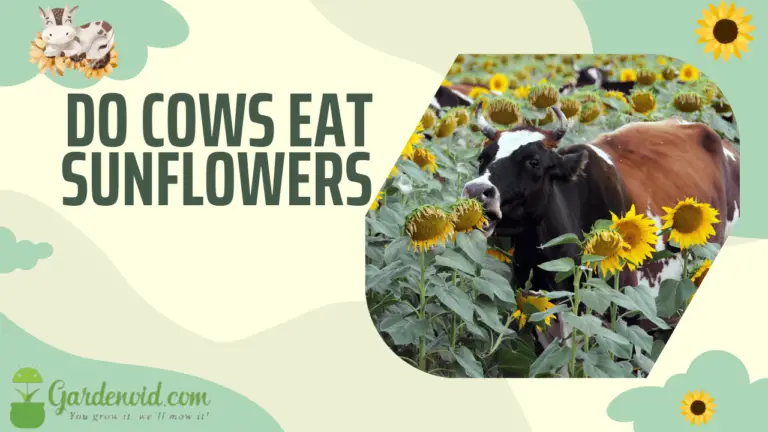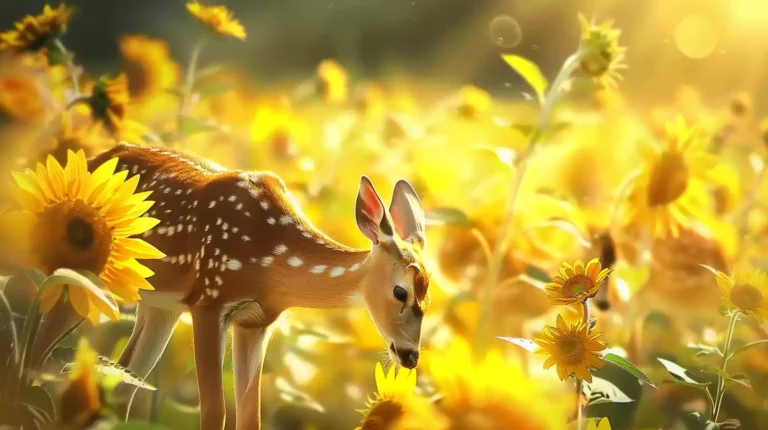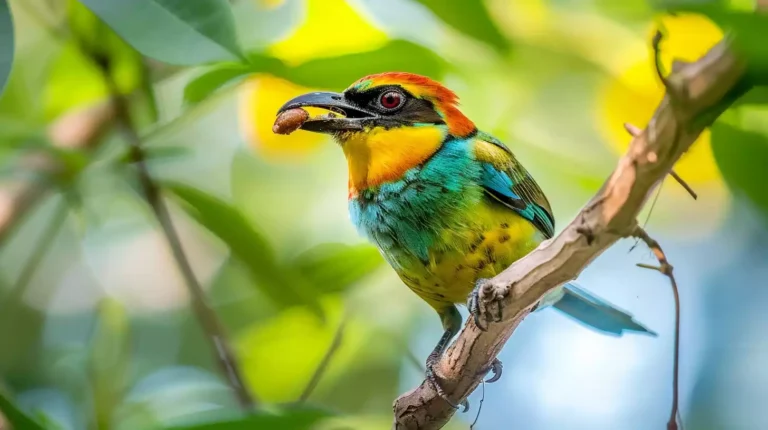How to Start a Native Garden That Supports Local Wildlife
Native gardens transform ordinary backyards into vibrant wildlife sanctuaries where butterflies dance among purple coneflowers and songbirds feast on seed-heavy grasses.
These living ecosystems bloom with the colors and textures that local creatures have depended on for centuries, creating enchanting spaces where nature and home gardening unite.
The process begins with understanding the delicate balance between plant selection, site preparation, and seasonal care… each step building toward a thriving habitat that welcomes wildlife year-round.
Quick Summary
- Research local ecosystems and native plant communities by visiting nature preserves and consulting regional botanical guides.
- Assess your yard’s soil quality, drainage, sun exposure, and microclimates to match plants with optimal growing conditions.
- Remove invasive species through hand-pulling and targeted treatment, then prepare soil with gentle loosening and compost enrichment.
- Select native plants that attract wildlife, such as purple coneflowers for pollinators and elderberry shrubs for birds.
- Maintain your garden seasonally with spring mulching, summer watering, autumn seed head preservation, and winter monitoring.
Research Your Local Ecosystem and Plant Communities
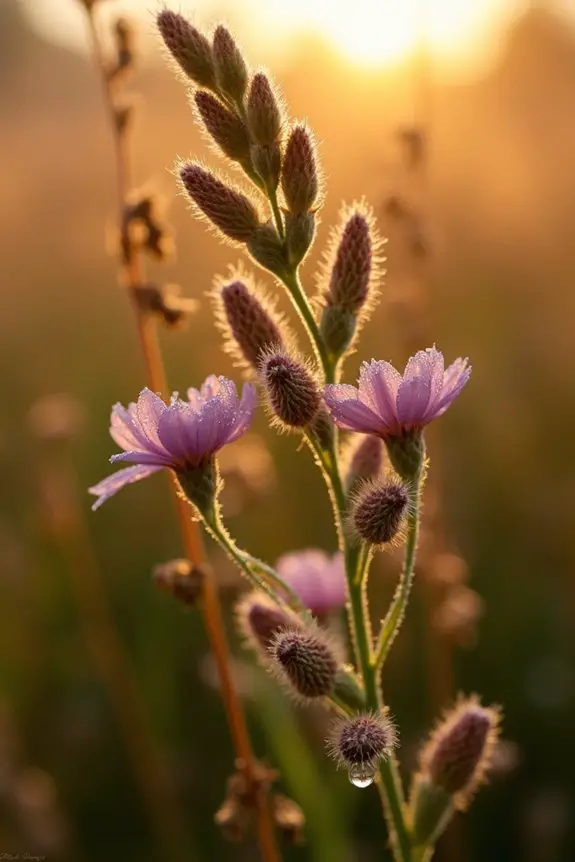
Before transforming a yard into a thriving sanctuary, gardeners must first understand the natural world that surrounds their home. Local ecosystems hold secrets waiting to be revealed through careful observation and research.
Native plant communities create intricate webs of life, where vibrant wildflowers dance alongside towering trees in perfect harmony. These plant relationships form the foundation of countless ecosystem services, from pollinator pathways to soil enrichment.
Gardeners can visit nearby nature preserves, consult regional plant guides, and connect with local botanical societies to expose which native species once flourished in their area’s original landscape.
Assess Your Site Conditions and Growing Environment
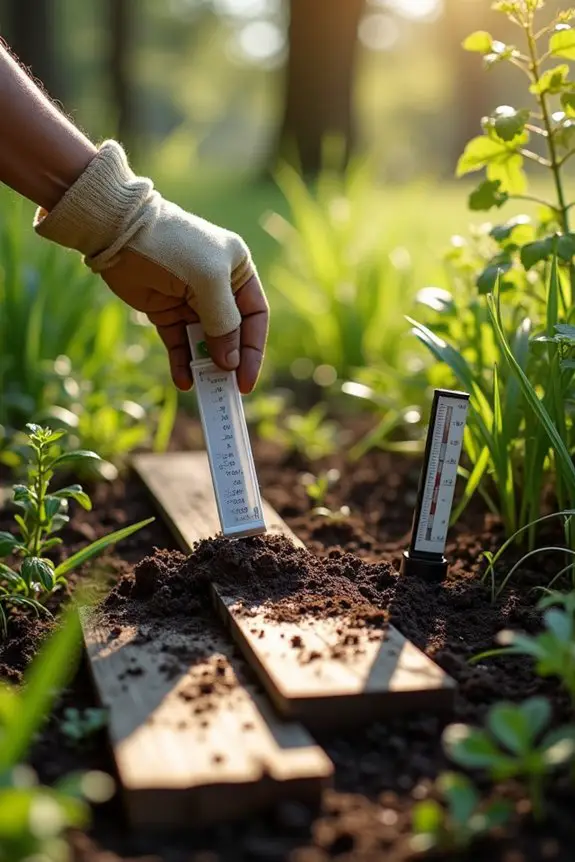
Once gardeners reveal which native treasures belong in their region, they must turn their attention to the unique canvas that awaits transformation in their own backyard.
Every plot tells its own story through soil quality, drainage patterns, and microclimates that shape which plants will flourish.
Measuring sun exposure throughout different seasons reveals golden opportunities for sun-loving wildflowers or shaded sanctuaries perfect for woodland species.
Testing soil pH and texture discloses secrets about which native beauties will sink their roots deepest.
Understanding slopes, wet spots, and wind patterns helps gardeners match the right plants to their perfect growing conditions.
Remove Invasive Species and Prepare Your Planting Areas
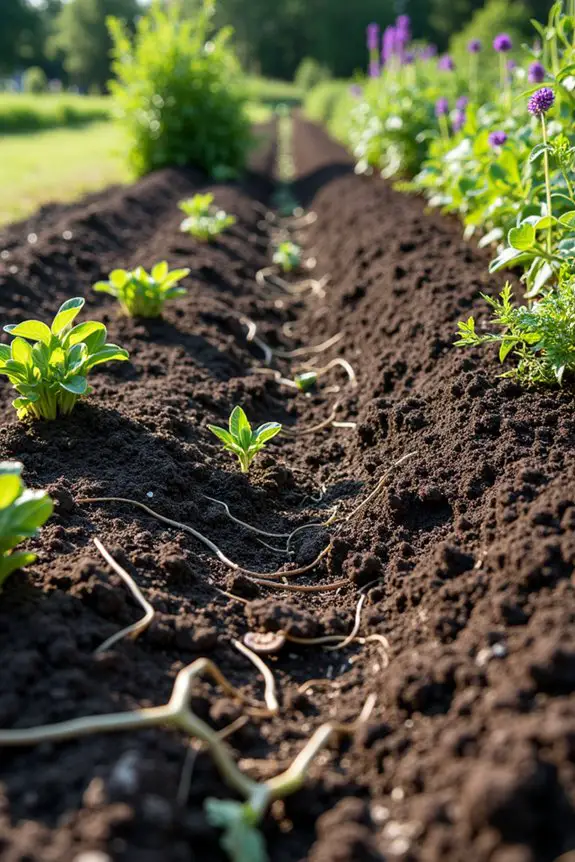
Armed with knowledge of their site’s unique personality, gardeners can now roll up their sleeves and begin the rewarding work of clearing space for native plants to shine.
Removing invasive species creates breathing room for indigenous beauties to flourish. Hand-pulling smaller weeds after rain softens soil makes this task surprisingly satisfying. Stubborn invaders may require careful cutting and targeted treatment.
Once cleared, soil preparation becomes the foundation for success. Gentle loosening with a fork allows roots to spread freely, while adding compost enriches the earth.
This mindful groundwork transforms ordinary patches into thriving sanctuaries where native plants will dance in sunlight.
Select Native Plants That Attract Wildlife
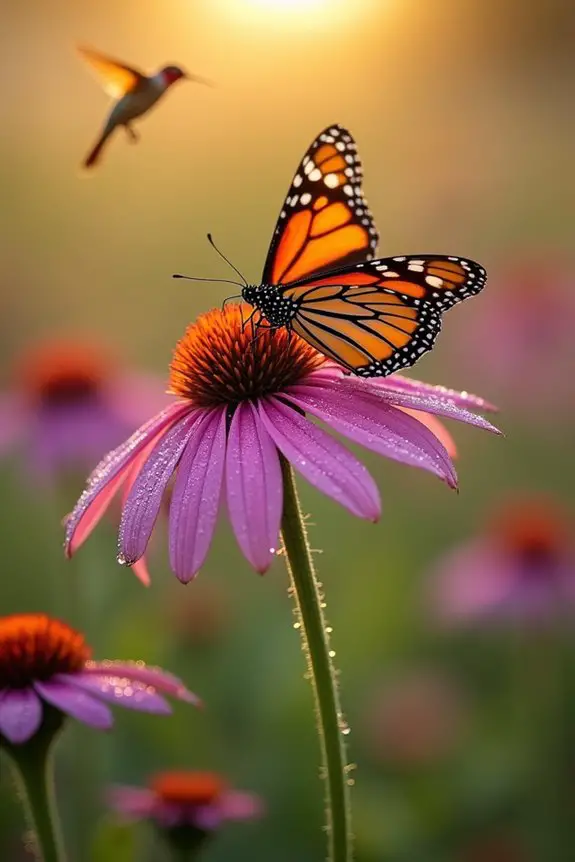
Nature’s symphony awaits gardeners who thoughtfully choose plants that beckon butterflies, birds, and beneficial insects to their outdoor havens.
Strategic selection transforms ordinary spaces into vibrant ecosystems where wildlife thrives throughout seasons.
Consider these enchanting plant choices:
- Purple coneflowers – Pollinator friendly flowers that bloom magnificently from summer through fall
- Native elderberry shrubs – Produce clusters of dark berries beloved by songbirds
- Wild bergamot – Fragrant blossoms that attract hummingbirds and butterflies effortlessly
- Serviceberry bushes – Native fruiting shrubs offering spring flowers and summer berries
- Black-eyed Susans – Golden blooms providing nectar and winter seed heads
Each plant becomes a living invitation, creating sanctuaries where nature’s creatures gather, feed, and flourish beautifully.
Design Your Garden Layout for Maximum Ecological Impact
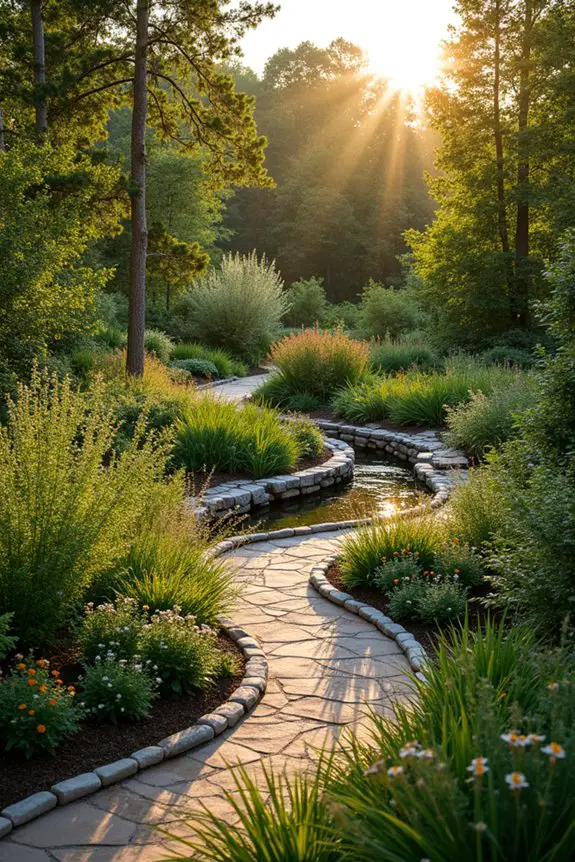
When thoughtful gardeners embrace ecological design principles, their outdoor spaces transform into thriving sanctuaries that support countless species while creating breathtaking natural beauty.
Strategic garden zones create distinct habitats, from sunny meadow patches bursting with wildflowers to shaded woodland corners filled with ferns and mosses.
Ecological corridors connect these diverse areas, allowing birds, butterflies, and beneficial insects to move freely throughout the landscape.
Layering plants at different heights mimics nature’s structure, with towering canopy trees sheltering understory shrubs and ground-hugging wildflowers.
This thoughtful arrangement maximizes food sources, nesting sites, and shelter while creating a stunning tapestry of seasonal colors and textures. The hands-on experience of nurturing this diverse ecosystem provides cognitive stimulation through the strategic thinking required to balance plant relationships and habitat requirements.
Incorporating natural pest control plants like marigolds and lavender throughout your design creates protective barriers that deter harmful insects while maintaining the ecological balance essential for wildlife habitat.
Plant Installation and Establishment Techniques
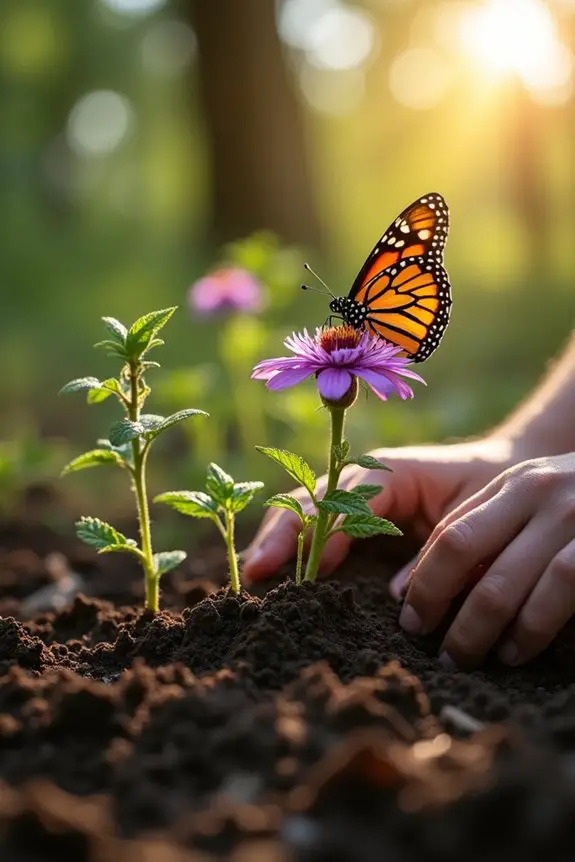
Successful native plant installation begins with understanding the delicate dance between roots, soil, and seasonal timing that determines whether young plants will flourish or struggle.
Proper soil preparation creates the foundation for thriving ecosystems, while thoughtful plant spacing ensures each species has room to reach its full potential.
Essential installation techniques include:
- Digging holes twice as wide as root balls but no deeper
- Loosening compacted soil around planting areas gently
- Watering deeply immediately after planting to eliminate air pockets
- Adding organic mulch around plants while avoiding stem contact
- Installing during cool, cloudy days when possible
Maintain Your Native Garden Throughout the Seasons
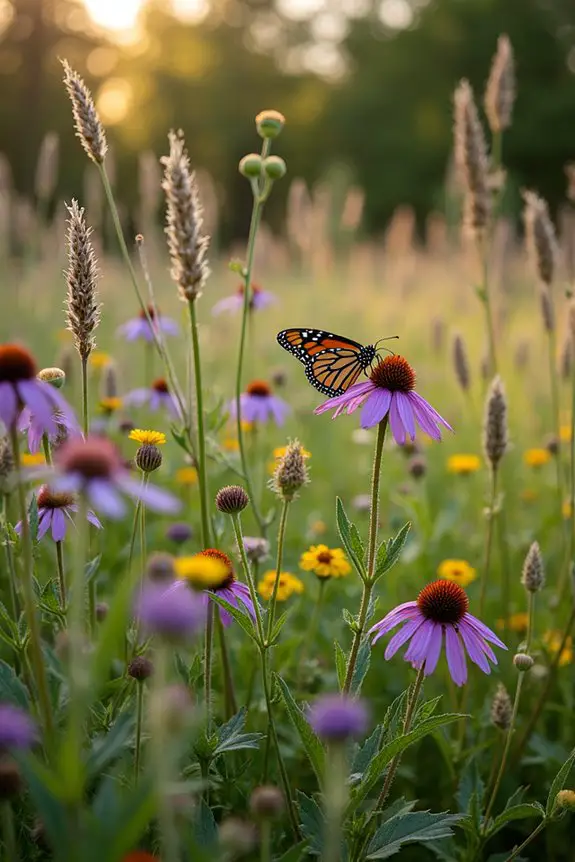
Once your native plants settle into their new home, a year-round rhythm of gentle care helps them develop into the stunning landscape you envisioned.
Spring brings fresh mulching around emerging shoots, while summer demands occasional deep watering during drought periods.
Autumn calls for leaving seed heads intact, providing crucial winter food for hungry birds and small mammals.
Winter becomes a peaceful time for wildlife observation, watching cardinals feast on purple coneflower seeds.
This seasonal maintenance creates a thriving ecosystem where native plants flourish naturally, requiring minimal intervention while supporting countless creatures through every changing season.
Monitor Wildlife Activity and Garden Success
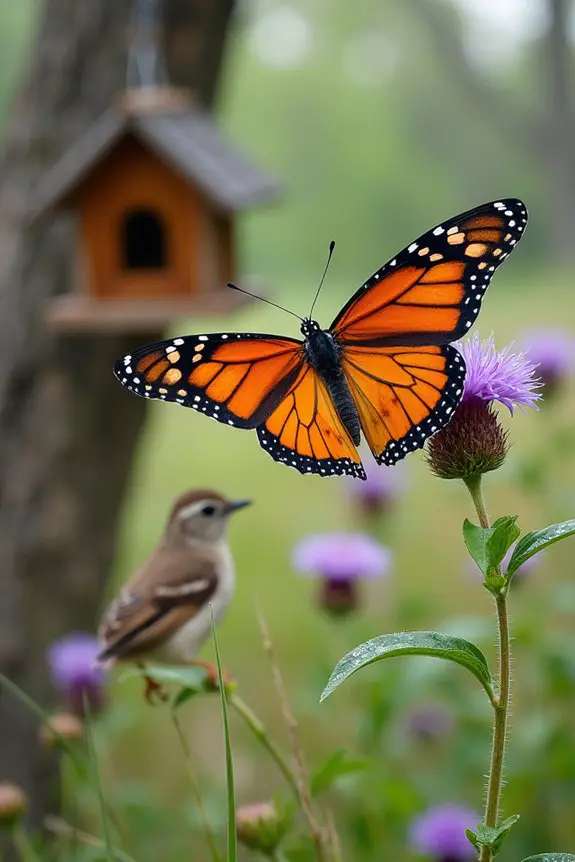
How beautifully rewarding it becomes to witness the gradual transformation of a simple plot into a bustling wildlife sanctuary.
Wildlife observation reveals the garden’s growing success through colorful butterfly visits, melodic bird songs, and busy bee activity. Garden monitoring tracks these enchanting changes throughout each passing season.
- Keep a nature journal with sketches of visiting creatures and blooming plants
- Take weekly photographs from the same spots to document growth patterns
- Count butterfly species during warm afternoon hours when they’re most active
- Record bird calls and nesting behaviors throughout different seasons
- Note which native plants attract the most wildlife visitors consistently
Popular Questions
How Much Does It Typically Cost to Establish a Native Garden?
Establishing a native garden typically costs $500-2,000, depending on size and plant selection. Soil preparation adds $200-500 for amendments and testing. Costs vary significantly based on whether one purchases seeds, seedlings, or mature plants for installation.
How Long Does It Take to See Wildlife Using My Garden?
Wildlife attraction timeline varies significantly, with some species appearing within weeks while others take seasons. Native plant benefits become more apparent as plants mature, typically showing increased wildlife activity after six months to two years of establishment.
Can I Use Native Plants if I Live in an Apartment?
Apartment dwellers can successfully grow native plants through container gardening on balconies, patios, or windowsills. Even small native plant displays attract urban wildlife like birds, butterflies, and beneficial insects to apartment settings.
Will a Native Garden Increase My Property Value?
Native gardens can contribute to property appreciation through enhanced curb appeal and unique landscaping features. The wildlife benefits they provide may attract environmentally conscious buyers, though overall market value depends on local preferences and broader real estate factors.
Do Native Gardens Require Special Permits or HOA Approval?
Most native gardens don’t require special permits since they use indigenous plants. However, homeowners should review HOA regulations carefully, as some associations maintain strict landscaping guidelines that could restrict native plantings despite their environmental benefits.

